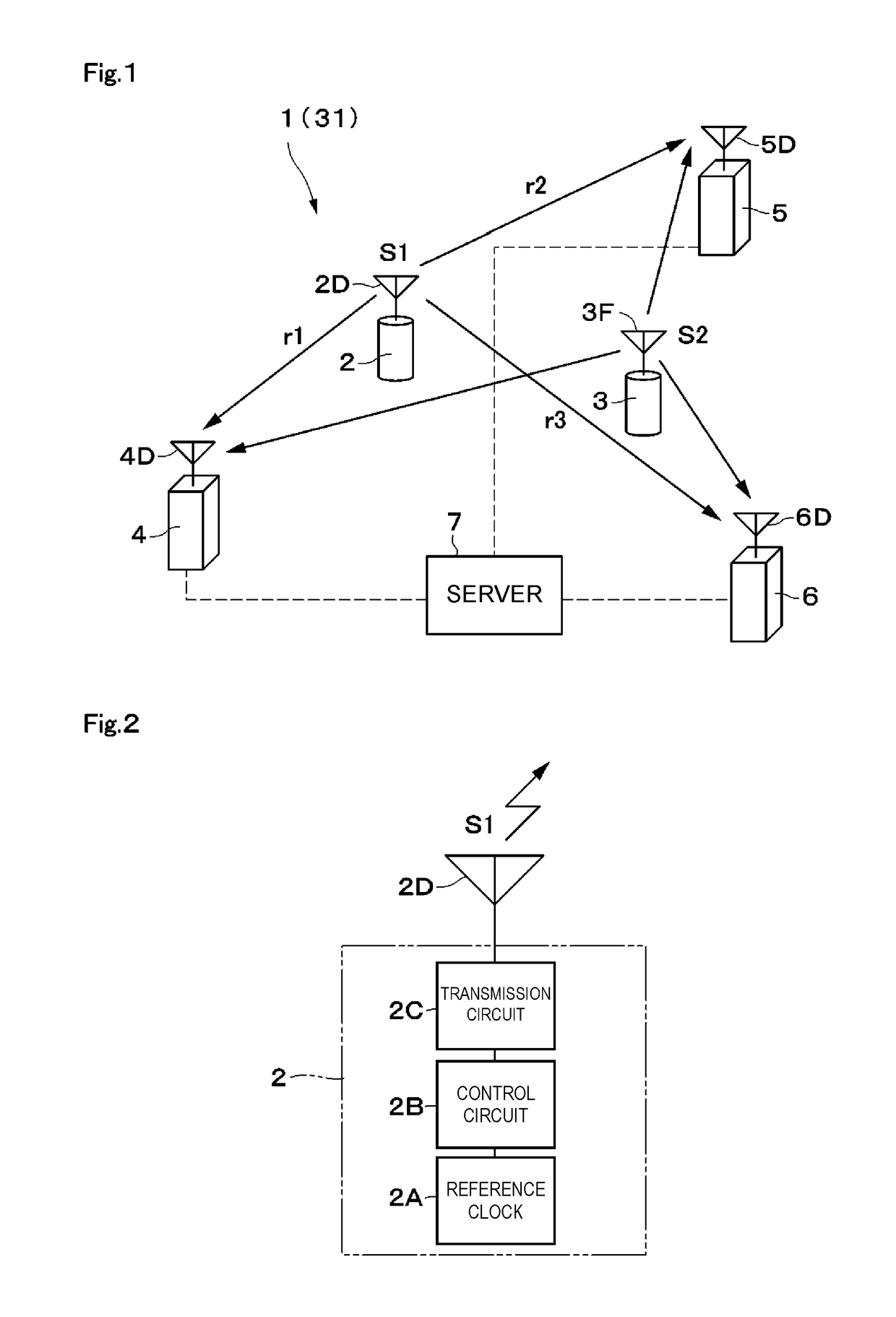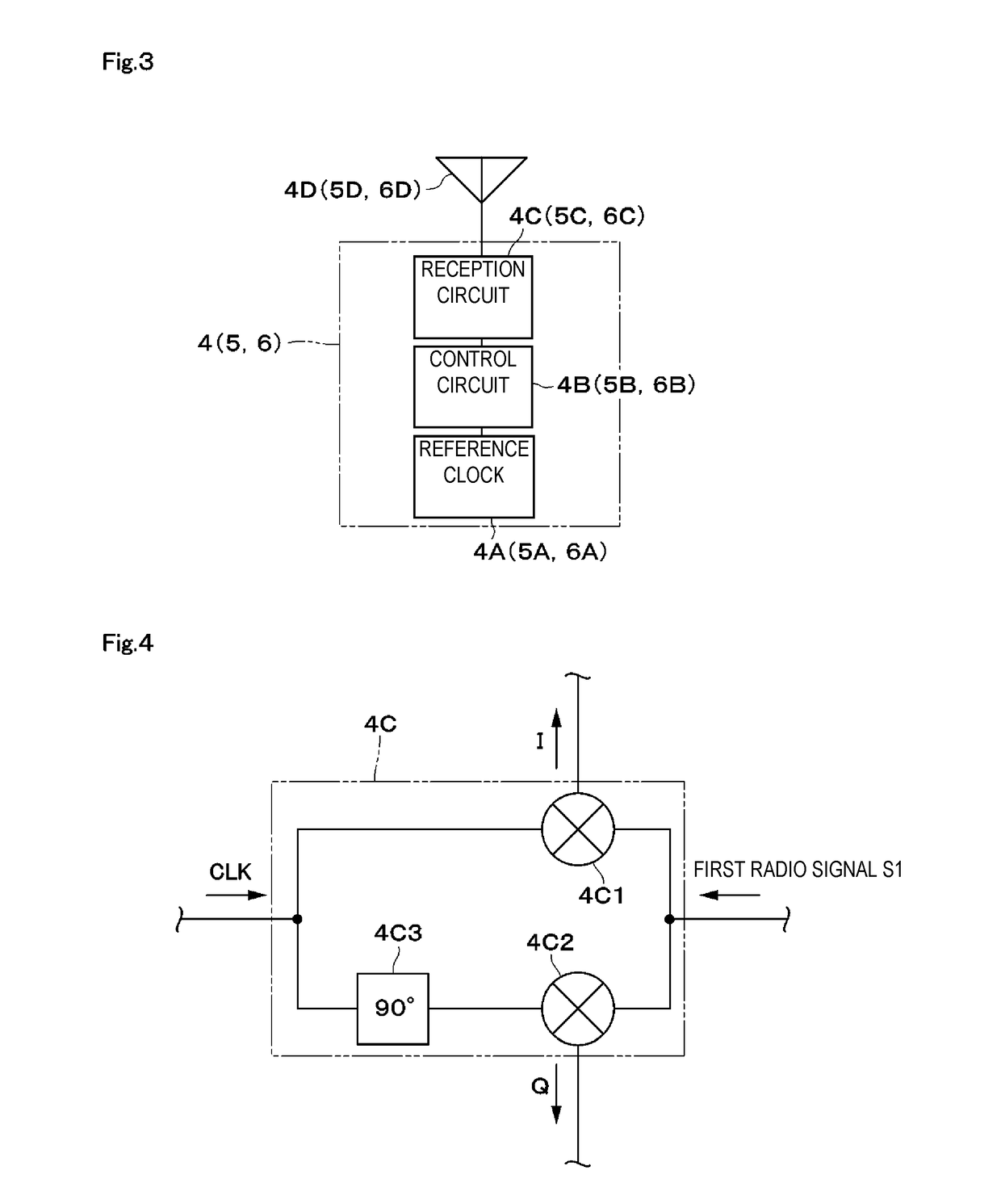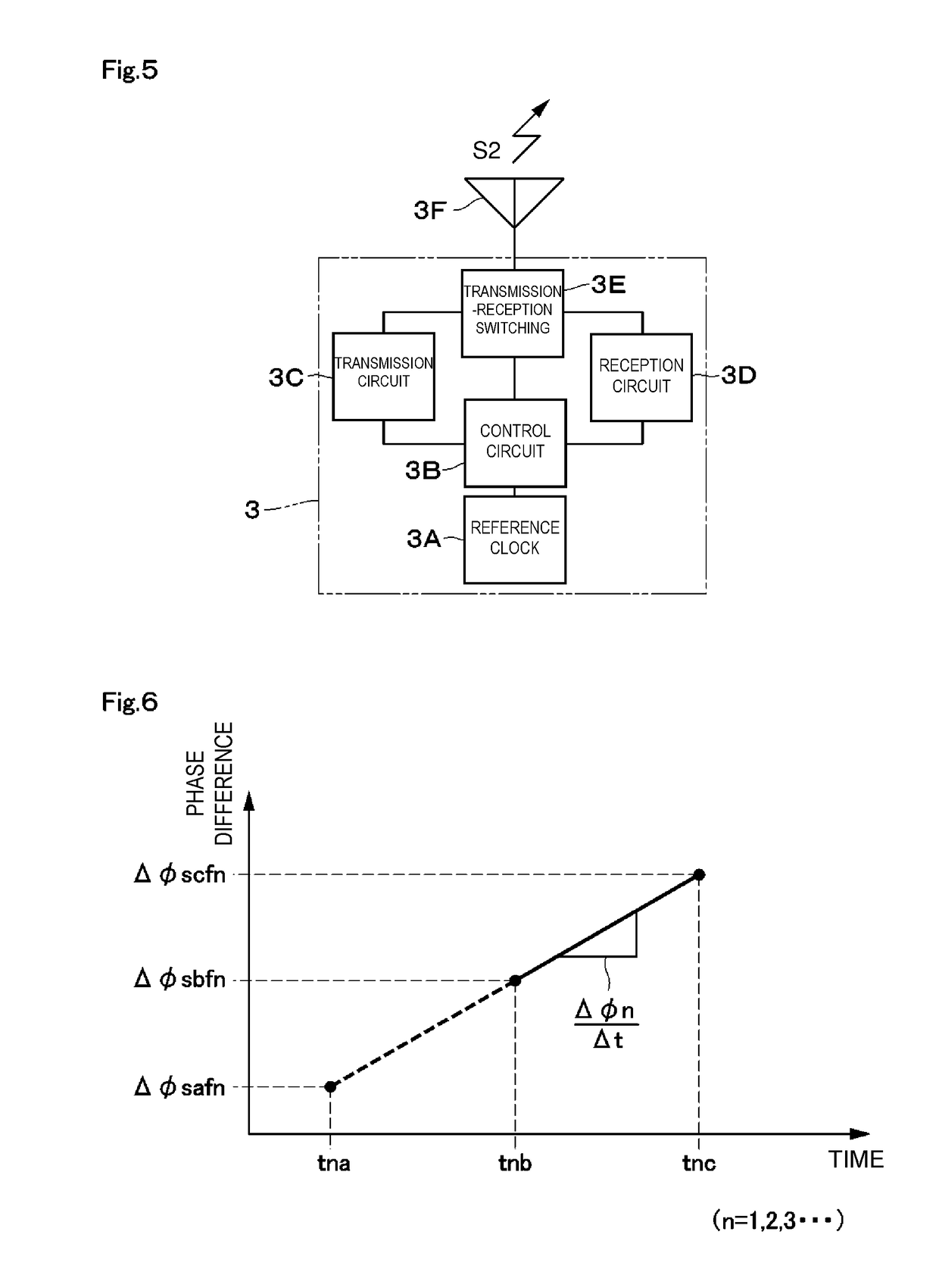Position detection system and position detection method
- Summary
- Abstract
- Description
- Claims
- Application Information
AI Technical Summary
Benefits of technology
Problems solved by technology
Method used
Image
Examples
first embodiment
[0047]A position detection system 1 is described with reference to FIG. 1 to FIG. 10. The position detection system 1 includes a mobile station 2, a reference station 3, a first fixed station 4, a second fixed station 5, a third fixed station 6, a server 7, and so on. In this case, for example, it is assumed that the mobile station 2 is apart from the first fixed station 4 by a distance r1, the mobile station 2 is apart from the second fixed station 5 by a distance r2, and the mobile station 2 is apart from the third fixed station 6 by a distance r3.
[0048]The mobile station 2 is, for example, a movable radio terminal that can be a detection target. As illustrated in FIG. 2, the mobile station 2 includes a mobile station reference clock circuit 2A, a control circuit 2B, a radio signal transmission circuit 2C, a transmission antenna 2D, and so on. This mobile station 2 transmits a first radio signal S1 to each of the fixed stations 4 to 6 and transmits a trigger radio signal St to th...
third embodiment
[0119]Next, a position detection method performed by the position detection system 31 will now be described with reference to FIG. 14 to FIG. 16.
[0120]Referring to FIG. 16, Step 21 indicates a specific example of the first radio signal transmission element. In Step 21, the mobile station 2 transmits the first radio signal S1 to each of the fixed stations 4 to 6 and transmits the trigger radio signal St used by the reference station 3 to transmit the second radio signal S2 (refer to FIG. 14).
[0121]Step 22 indicates a specific example of the first phase difference calculation element. In Step 22, the respective fixed stations 4 to 6 calculate the phase differences Δϕmf1 to Δϕmf3 between the carrier phase Pm of the received first radio signal S1 and the phases Pf1 to Pf3 of the reference clocks Cf1 to Cf3 (refer to Formula 6 to Formula 12).
[0122]Step 23 indicates a specific example of the second radio signal transmission element. In Step 23, the reference station 3, which has received...
second embodiment
[0154]The first fixed station 22 is configured so as to also function as the reference station and transmit the second radio signal S2 to each of the fixed stations 5 and 6 in the However, the present disclosure is not limited to this configuration and the second fixed station or the third fixed station may be configured so as to also function as the reference station and transmit the second radio signal. In addition, among the fixed stations, two or more fixed stations may be configured so as to also function as the reference station and transmit the second radio signal.
[0155]The mobile station reference clock circuit 2A is configured so as to have the function to generate the reference clocks Cm and Cm′ of the two angular frequencies ωm and ωm′, and the mobile station is configured so as to transmit the first radio signals S1 and S1′ of the two kinds in the third embodiment. However, the present disclosure is not limited to this configuration. The mobile station reference clock c...
PUM
 Login to View More
Login to View More Abstract
Description
Claims
Application Information
 Login to View More
Login to View More - R&D
- Intellectual Property
- Life Sciences
- Materials
- Tech Scout
- Unparalleled Data Quality
- Higher Quality Content
- 60% Fewer Hallucinations
Browse by: Latest US Patents, China's latest patents, Technical Efficacy Thesaurus, Application Domain, Technology Topic, Popular Technical Reports.
© 2025 PatSnap. All rights reserved.Legal|Privacy policy|Modern Slavery Act Transparency Statement|Sitemap|About US| Contact US: help@patsnap.com



